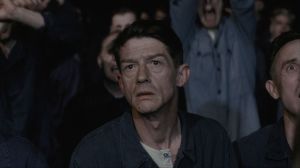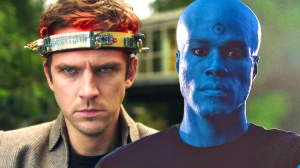It’s been six long years since Shinichirō Watanabe graced our screens with one of his works. The 2019 anime Carole & Tuesday was the last time Watanabe directed a project. Now, the creator has returned to Adult Swim and Toonami with a project that is aesthetically reminiscent of one of his most defining works, Cowboy Bebop. From its minimalist, primary-color marketing to its jazz-centric soundtrack, Watanabe’s newest series, Lazarus, has multiple parallels with the iconic ’90s anime. Given the overlapping creative qualities, one can’t help but wonder if Lazarus’ stylish ending credits animation speaks to the conclusion of the story.
Videos by ComicBook.com
Every episode of Lazarus has thus far ended with an animation depicting the worst outcome of the series’ premise: everyone who has used the Hapna miracle medicine has died from the secret mutation it was designed to contain. When looking at the not-so-subtle imagery in the credits, one can’t help but think back to a similar black-and-white ending credits sequence for Cowboy Bebop. While first-time viewers may not know it, the credits of Watanabe’s first anime provided crucial story details regarding the main character Spike Spiegel. That being said, just how much should viewers read into the beautifully animated end credits of Lazarus?
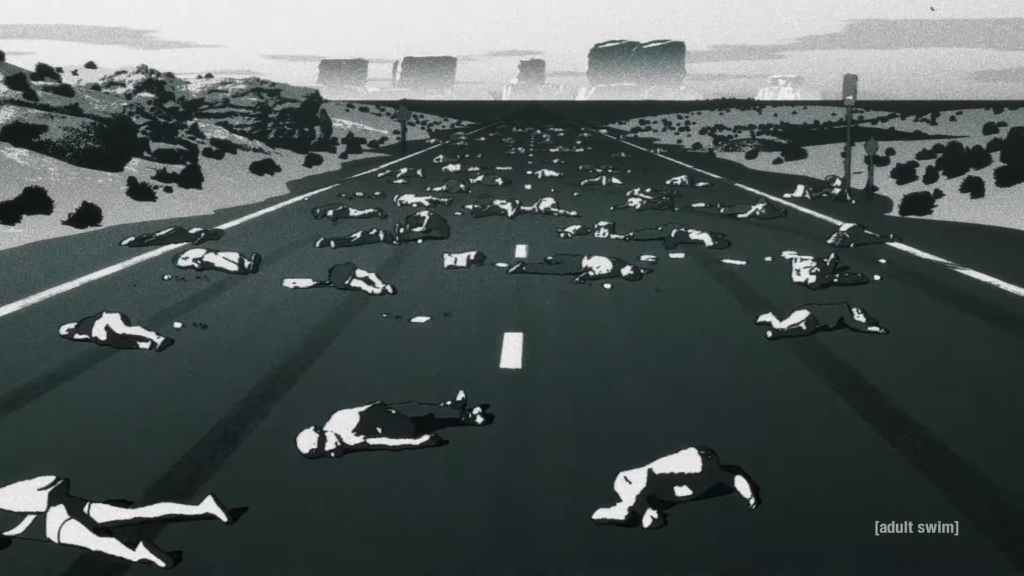
The Devil is In the Details
Set to the tune of the perfectly titled “Lazarus” from The Boo Radleys’ 1993 album “Giant Steps,” Lazarus’ post-credits scene is animated to look like a “oner” shot. The camera tracks each main cast member of the show, each positioned on the floor in a different way, almost as if they are dead. Lazarus revolves around a rag-tag team of misfits put together to track down neuroscientist Dr. Skinner, whose miracle drug Hapna will kill everyone who has taken it within a month. The clock is ticking, and the second episode of the series revealed that everyone in the main cast has taken Hapna — so the stakes have never been higher. That makes the end-credits scene that much more unnerving.
At this point, it’s speculation whether the credits foreshadow the fate of everyone on the show, but they still tell an interesting story nonetheless. Especially when we get to our main character, Axel, he is the only one to get up and smile at the camera, as the shot zooms out to reveal hundreds of others who have seemingly fallen victim to Hapna, with the pills and bottles clearly scattered throughout the floor. It’s an interesting twist that could hint at the greater importance of Axel, much like how Cowboy Bebop’s credits were used to provide clues about Spike’s past before it was fully revealed in the series’ penultimate episode.
Overall, the end credits could be interpreted in multiple ways; it could signify that Axel knows something about Dr. Skinner and Hapner that the rest of the team does not, or it could have a more overt and literal meaning, implying that Axel is the sole-surviving character by the time the season comes to an end. At the end of every episode, a countdown reminds viewers of how many days are left before Hapna kills its users (again, in a similar style to the “See You Space Cowboy” text that ended every episode of Bebop). It’s an ominous way to end an episode, even more so when you see the bodies lying on the floor during the credits.
There is also the opening credits of Lazarus to consider, with each new episode featuring the same animation but a different opening narration. With every episode, a new character narrates their experience with Hapna and what led them to take the drug. Inspired by the real-life Opioid epidemic, Watanabe is using Lazarus‘ story as a reflection on humanity’s struggles and their attempts to come back from death. Perhaps Axel’s awakening at the end of the credits sequence also signifies the hope that the rest of the world has, and the series could turn out for the better.
[Related: Lazarus Review: Shinchiro Watanabe’s Back With a New Banger]
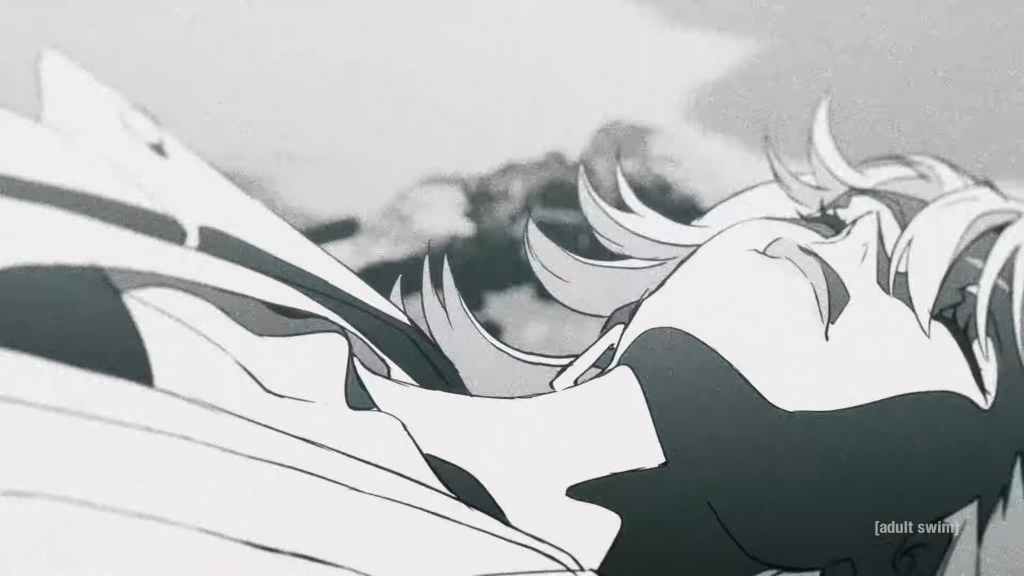
Lazarus’s End Credits Are Also Reminiscent of Another Seminal Work
More than just Shinichirō Watanabe’s early work, Lazarus‘ credits sequence is also structurally reminiscent of the end credits to Paranoia Agent, created by Satoshi Kon. Known for such iconic works as Perfect Blue, Millennium Actress, Paprika, and Tokyo Godfathers, Kon’s anime series explored profound themes of its own about the blurring of dreams and reality. Similar to Lazarus, the credits of Paranoia Agent depict a group of characters forming a circle around the pink dog/mascot, Maromi. Created by a character within the series, Maromi is a pop culture sensation whose success puts pressure on its creator to make the next big hit, setting in motion the events of the series.
So, Maromi’s inclusion in the end credits sequence, depicting everyone seemingly lifeless in a circle around them, has its own thematic importance similar to Lazarus’ credits scene. Whether this was intentional on Watanabe’s part is unclear. Still, the visual and thematic consistency between the two credit sequences makes it feel as though the animation played at the end of every episode of Lazarus has more importance than people may realize. Even if that ends up not being the case, the parallels in imagery between Watanabe’s latest work and Kon’s only long-form anime project are still fun to consider, especially with the influence both creators have had on the medium of animation and storytelling in general.
One significant way that the Lazarus credits stand out from either Paranoia Agent or Cowboy Bebop is their incredibly detailed animation. The sequence was animated single-handedly by Mai Yoneyama, created as a single cut while also impressively using background animation to make it look as if a camera is moving throughout the scene, examining each body.
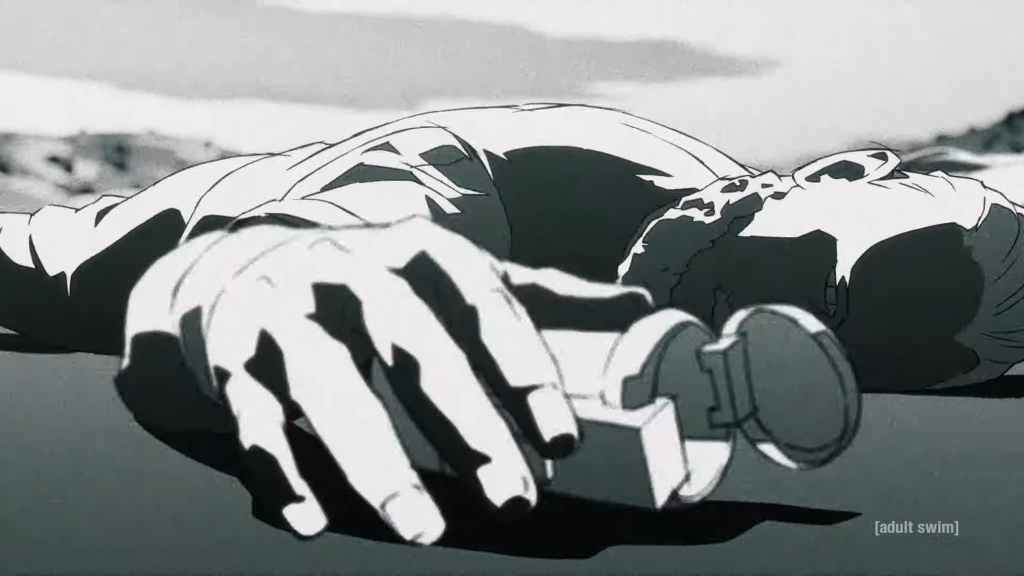
Lazarus’s End Credits Are a Work of Art
Lazarus has proven itself to be an exceptional animated series in every facet of production thus far. The prestige talent behind the series speaks for itself. The anime employs brilliant animation from Studio MAPPA, an unforgettable soundtrack from artists like Kamasi Washington, and fight choreography by John Wick Director Chad Stahelski to create a truly enriching experience. To top it all off, fantastic opening and ending sequences bookend every installment. The beginning of an episode creates new depth for the characters and provides context for what put them in their precarious situation, while the consistent ending reminds viewers of what fate could await the cast we’ve become more invested in with each passing episode.
Shinichirō Watanabe has made each of his works more unique than the last, rarely feeling repetitive. That hasn’t changed with Lazarus, despite its aesthetic similarities to Cowboy Bebop. The unique story and timely themes of society, and how individuals seek desensitization and numbness, unknowingly, at the cost of their lives. Even if the end-credits sequence of Lazarus doesn’t contain any foreshadowing or hints to the larger story, it still does a phenomenal job of encapsulating everything the anime is about.


